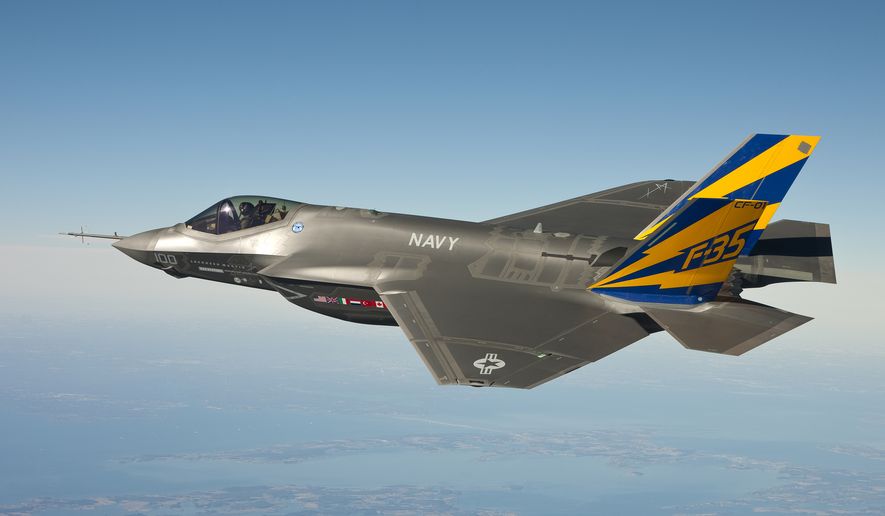ANALYSIS/OPINION:
Lockheed Martin’s F-35A Joint Strike Fighter is billed as the Pentagon’s “next generation” aircraft, destined to give the Air Force, Navy and Marines air dominance for decades to come. But cost overruns, missed deadlines and doubts about its ability to live up to performance expectations have made it controversial.
To find out if the aircraft can perform as advertised, The Heritage Foundation recently interviewed 31 of the 174 Air Force pilots who have completed training on the F-35A. The pilots, used to flying the F-15C, F-15E, F-16C or A-10, were asked to assess their former fighters’ handling characteristics and dogfighting faculties and then, using those as their baselines, answer the same questions about the F-35A.
Each pilot expressed a high degree of confidence in the Lightning II’s dogfighting and surface attack prowess. Even with developmental restrictions that limit the F-35A’s responsiveness and ability to maneuver, every pilot picked the F-35A over his former jet in a majority of dogfight scenarios.
Their comments revealed a shared belief that this jet is on the precipice of being extraordinary:
• “You didn’t ask about its ability to suppress enemy air defenses — one F-35 can do the work of three F-16CJs faster and with much greater accuracy.”
• “The ID capability of the sensor package is unmatched. So much so that we won’t buy into another system’s threat declaration — the jets are always faster and spot-on.”
There wasn’t a Pollyanna among the 31. Every pilot noted things that needed improving. The layers within the Multi-Function Display were often cumbersome to page through. The Tactical Situation Display was still depicting several “ghost” images for a single target aircraft, and one or two complained about occasional in-flight failures/resets of the jet’s AESA radar.
But the pilots noted that every software update has brought incredible improvements, and they were confident that the remaining glitches would be solved when the next software update is fielded next summer.
Still the delays and cost overruns in the F-35 acquisition program have led many to question the Pentagon’s “concurrent development” approach. The military recognized, as it committed to the program, that technology was advancing so rapidly it would be hard to field a jet that was not already approaching obsolescence. To deal with that, they elected to acquire the aircraft as components were still undergoing some stages of research and development. That concurrent development approach entails risk: Even small changes in the weight, size, performance and schedule of any component would affect the weight, size, performance and schedule of the entire system.
The risk of developmental delays and cost overruns were accepted to mitigate an even bigger risk: that the United States would field a jet that was all but obsolete by the time it became operational. Only extraordinary leadership could mitigate those risks and, while that should have been factored into the whole of the acquisition process, it wasn’t.
In its first 18 years of existence, the F-35 program office had nine directors — one every two years. But the current F-35 program office executive has been in place for four years and, in that time, the program has turned around.
Clearly, the pilots interviewed by Heritage feel the concurrent development approach is delivering on its operational promise and the United States is on its way to fielding the freshest, leading-edge technology to ever take flight. That is reason enough for the Pentagon to hold on to the benefits and refine the bureaucratic issues within the concurrent development approach.
If we are smart, our military will use the lessons of the F-35 to refine its process into the most dynamic, adaptable and efficient acquisition models ever conceived. Concurrent development should be the foundation of that process, and the biggest lesson learned to date is that it requires exceptional leadership.
• A 25-year veteran of the U.S. Air Force, John Venable is a senior research fellow in The Heritage Foundation’s Center for National Defense and the author of “Breaking the Trust Barrier: How Leaders Close the Gaps for High Performance.”




Please read our comment policy before commenting.